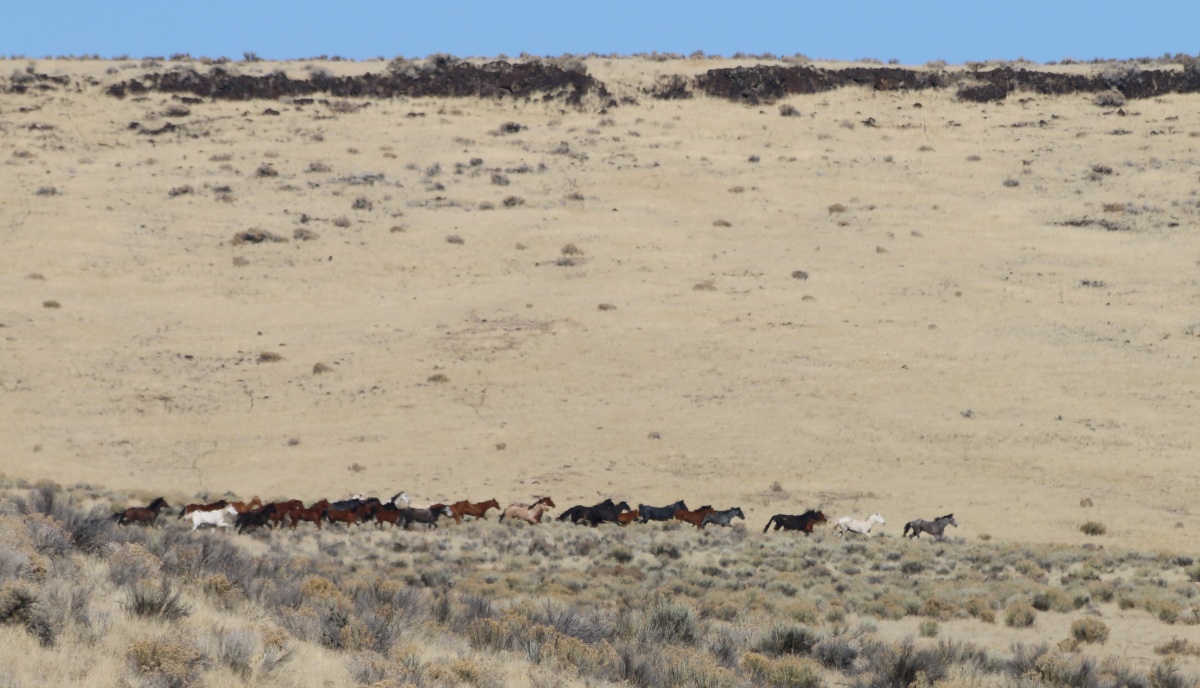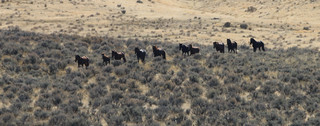
Little Owyhee HMA
Horses within the HMA are descendants of ranch horses that either escaped or were released into the area. The majority of the horses exhibit a bay, brown, black, or sorrel color pattern. However, there are also a number of palominos, buckskins, pintos, grays, roans and white horses.
Location: The Little Owyhee HMA is located in eastern Humboldt and western Elko counties, approximately 40 air miles northeast of Winnemucca, Nevada.
Size:;The area consists of 452,518 acres of BLM land and 7,766 acres of a mix of private and other public lands for a total of 460,284 acres.
Topography/Vegetation: The area is within the Columbia Plateau and Great Basin physiographic regions. On many of the low hills and ridges that are scattered throughout the area, the soils are underlain by bedrock. Elevations within the HMA range from approximately 4,500 feet to 6,100 feet. The majority of the HMA lies within 5,000 to 5,500 feet elevation. The climate is continental and semi-arid with cool, moist winters and warm, dry summers. Precipitation ranges from 6 to 14 inches, occurring primarily in the winter and spring. Average annual temperature ranges from 43 to 47 degrees Fahrenheit.
Vegetation is almost entirely the sagebrush-grass types typical of the cold desert and Great Basin. Low sagebrush and big sagebrush predominate throughout the greatest portion of the areas. Other plant species include downy brome, Thurber needlegrass, Indian ricegrass, bluebunch wheatgrass, squirreltail, bluegrass, spiny hopsage, green rabbitbrush, grey rabbitbrush, bud sagebrush and winterfat. Forage species for wild horses are primarily the perennial grasses: needlegrass, ricegrass, wheatgrass, squirrel tail, and bluegrass.
Wildlife: The area is also utilized by domestic livestock and numerous wildlife species. Typical wildlife species found in the area include chukar, partridge, sage grouse, mule deer, pronghorn antelope, coyotes, jackrabbits, and various species of birds, rodents and reptiles. The area is used as winter range for deer and provides valuable forage during migration periods. The North Fork of the Little Humboldt River Wilderness Study Area (WSA) is also located within the HMA.
AML: 194-298

